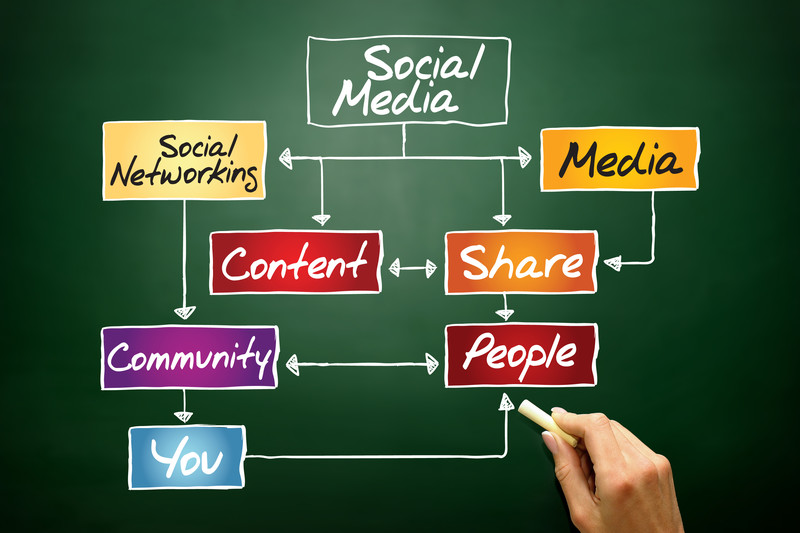Social Media Engagement Strategy
Are you tired of zero results from social media? Good, now you can make a change and get your social media ducks all in a row. Social media strategy is a huge, challenging topic and honestly, not many professionals are doing it well. You can build an edge.
Strategy for SMB’s and solo professionals is different than corporate strategies so in this post, we want to take a SMB approach to it.
And the social media world is noisy, shallow, vain, confused, unfocused, and frivolous. It’s not easy to generate real conversations and be productive. There’s plenty of challenges to solve. You might be inclined to think to yourself that this is a full time effort. But really, it’s just the first phase that’s taxing on your time and energy.
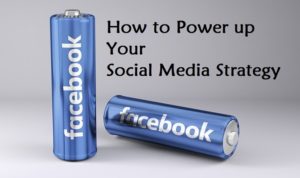 This is why few of your competitors have done it. That makes social media strategy a unique opportunity for you as a Realtor, travel or hotel manager, or tech startup entrepreneur.
This is why few of your competitors have done it. That makes social media strategy a unique opportunity for you as a Realtor, travel or hotel manager, or tech startup entrepreneur.
Rather than getting into social strategy in point form, it’s more productive to experience it as a storyline, here in this post. Bullet points are quick and clear, but readers aren’t emotionally invested in them. I’ll keep the bullet points to a minimum.
Make Connections and Impact
You’ll be creating connections with relevant people, establishing goals for them to reach, creating personalized, unique, engaging content, and getting effective messages to them. Your messages and content pieces (web pages, blogs, photo, videos, podcasts, pdf guides, etc) are simply a part of a process leading to your ultimate marketing and sales goals.
Next, you must take time and effort to interact and build a relationship and nurture them to see you as a solution. And lastly, you need to focus your discussion with them to get them to commit to buying your service or product. It is work for sure, but a process can help streamline and make this easier to commit to.
Power Up Your Process
Your strategy needs a process. Yes, because your target customer needs focus or they’ll forget you and why they should become your customer or client. If you don’t do things sequentially, you’ll never build the emotion or intent so they’ll resolve their pain/need.
Very often, customers don’t take their pains/needs seriously. Using social and your blog posts and marketing pages, hopefully you will fix that and get them engaged with a solution.
If you post randomly without strategy, it won’t be effective. The more thought you put into this, the better the outcome. If you don’t have time to do this full time, you may have to hire someone. If you understand the process and goals, you might still be able to contribute very nicely.
The final part of the social media strategy process is post analytics where you see what worked in likes, shares, leads, and brand image building. You’ll need a paid tracking solution. There are AI driven solutions now that offer quite a few other benefits too. Things progress fast in social media tech.
Why Have You Failed So Far?
You may have failed because you have low reach. You have insufficient contacts and you’re not doing enough social ads to get big reach. Organic social has its limits so you’ll need to do more. Build lots of relevant connections and send out friend requests. And although being likable is important, that’s a small part of the strategy.
Having a few successful, active and well engaged connections is nice but that won’t solve your sales goals. And big engagement with a few people could eat up your valuable time. It could skew the conversations away from what you need to do. And that’s primarily to build a lot of leads. Take a big picture view of social strategy.
Before you build connections, you have to create a reason why they will connect with you, interact with you, and be exposed to your posts. If you’re a Realtor, your blog, FB page should contain interesting, unique and engaging real estate related content. More content equals more paths. Then your comments will be a clever cue for them to get into it and connect you with their desired solution.
Always Keep Their Needs/Pain Points in Mind
Your connections don’t like wasting their time. Know your audience deeply. Think about their pain points and issues/values they care about and explore those topics in your posts. Consider how your content will engage them, make them feel and affect their perception of you. And how does your interaction with them make them feel they’re getting close to solving their needs?
Social media strategy is about creating emotion and driving behavior.
There’s no easy wins in social media engagement and you’re not an expert right now. Work hard and earn emotional points for each post and gain a reputation for an agent who is aware, savvy, fun, and who gets results. It’s hard to connect value to most social media points, but you need to think about how each post adds value to your connections.
Here’s a formula for social media engagement strategy and to orient you to the rest of the strategy discussed below:
Value + Connections + Plus Impactful Messages + Persistence = Potential Customer
Create Value to be Communicated
If you’ve been active on social media, you know many people post awful stuff with no productive point. Often they’re showing off or venting anger and frustration. They aren’t delivering anything of value and the exchange is a pointless dead end. And when they do that, they build an image of a frivolous time waster.
Instead, the first thing you need when communicating is understand what your end goal is. It could be a download, demo, price quote, phone call, product spec sheet, views of key web pages such as your contact page or homes for sale listings, a podcast or Facebook event, establish authority or credibility, or to get them to share your posts.
To get something, you have to give something.
Now that you’ve got something of valuable to give and an end goal, you need to collect material to post on FB or Twitter that helps get your message across — about the value of your service or product and move them forward.
Finding material to post that is relevant to your marketing goals is difficult. I have to do this every day and believe me I have to rack my brain and research well to find worthy items to post. You’re looking for content that is connected to your service somehow.
For instance, I post the urls of housing market updates which tells Realtors I am deep into their markets. Then they visit the blog post and see the depth of the post, how many social shares it has, and that the post offers a positive message about buying a home.
These social posts of relevant content are consistent with their goals — to find buyers/sellers, create leads, and make a sale. This blog post tells them I am deep into social media, and they know I am an experienced Search engine optimization expert and content strategist with a book published. They know I can create a big audience and build engagement with them via social media.
My value proposition is delivered. They contact me because I’ve hit their pain points and built enough emotion to move them forward to be successful online.
Realtors, hotel managers, startup entrepreneurs, and travel managers have big goals and they want expert level providers with experience, talent, creativity, tech skills and drive. If you look like a unicorn to them, they’ll be checking you out.
Engaging Means getting them Emotionally Involved
Whatever way you choose to leverage social media’s incredible flexibility, range and power, you’ll eventually come to the conclusion that you have to engage your connections in relevant topics, ideas, events, and present value to them in a voice they like.
You must deepen your engagement with your readers
The good thing is that it doesn’t matter where people are when they’re using the web. Their needs or pain points are the same, as they use Google, surf the web, use Twitter or Facebook, or check their email throughout the day. Same people, same needs.
If you have some experience with social media, you probably know that social leads are often kind of, well, junk leads. You might describe it as junk traffic. Some fun banter, likes and comments but nothing that creates a new customer. Yet, if we ramp up the engagement factor with content that resonates with their interests, perspective, and pain points, we can get the specific results we need whether in social shares, links, or buying impulse.
If you grow your reach, communicate your value proposition, strengthen your engagement with them, and keep in touch with them, you can generate quality leads and sales revenue. Will you need money? I think you will need some money for graphics, video, free giveaways, and paid social advertising campaigns.
You can’t create something out of nothing though. Part of your strategy is to find the right audience and hit on the right pain points and then deliver the right value.
This post is about the most important facet of social media strategy which is engagement. Without engaging people, they just disappear and you fail to impact. Engagement powers up your Facebook results.
Let’s Cut to the Chase Right Now
There’s 2 things that will make your campaign suck. First, you don’t know your customer’s profile well enough and what their key pain points are. Without this knowledge, you’re in the dark and wasting your time.
The second thing is good content. Because good content is the medium of profitable contact with others. Content engages them whether a comment, joke, video or picture.
After you realize those, you need goals and a strategy.
Your social media goals might be:
- reach and visibility
- content shares
- connections created
- content/post views
- sales revenue
- referrals through to your website
- persistent engagement with them
Choose these social media business goals above, and use the process outlined below to pave the path to them.
Although software subscription service providers portray social media marketing as a no-brainer, it’s perhaps the most difficult of all channels to profit from. Studies reveal many business owners are uncertain about how to organize a social media strategy, what to expect, and perhaps this post will bring more clarity.
Facebook leverages the emotional engagement and drawing power of their user’s personal lives. They sell ads on those users pages and posts. And you have to leverage the same thing to get free organic exposure in their Facebook time.
Posting Regularly Isn’t Enough at All
This is a wild beast, so don’t think that by using Hootsuite and posting regularly that you’ll master it. I’ve used them with those expectations and earned zero results. Focusing on your audience’s key pain points is perhaps the most important task. Don’t worry about tech tools until you know your audience’s pain points intimately.
Automation is okay for some things, but real success happens when you respond to those pain points dead on with material that is precisely relevant, and updated.
So let’s take the bull by the horns and build a strategy to generate customers from social media. We’ll cover everything from your value proposition, to goals, to metrics, to social posting tips.
We’ll cover a lot of challenges such as what are the customer’s specific, actual pain points, which content and posting activities could engage customers and build their loyalty, and how could we utilize social media to build Google rankings and then convert a sale. Oh yes, there’s a big benefit here in how we boost our Google traffic!
Social media is content sharing but content wont get shared unless you have both reach and emotional impact.
Nick Smith, author of the book Successful Social Media Marketing says social media is about building relationships and sustaining them, it’s not about selling them right away.
Alright then, what is it that takes so much time? Turns out it’s the usual requirements of marketing and advertising which we’ll explore below.
Small Personal Networks Won’t Cut It
Engagement isn’t really about sharing comments between friends because that won’t translate to the big exposure you must have. This is business and your real goal has to involve accessing huge audiences of interested people and engaging them.
Great content shared to a large network and then also boosted via paid channels takes it to the scale you need. Some things won’t happen until you hit “critical mass.” That’s the point where through luck or strategy, that all your efforts seem to add up and make enough impact.
Do you have to pay $100,000 for that or could you possibly do it for $1000? Really, no one knows. It depends on the quality of everything you’re doing. Hit the right audience with the right message, and it will probably happen. Money makes it even better.

In Facebook remarketing via custom audiences, you’ll find a powerful technique to generate the familiarity your customers need. Creating constant exposure via organic connections on Facebook is very difficult if not impossible. Because your post disappears on everyone’s feed quickly. Even if you post 20 times a day, you might not reach enough of them. Facebook is crowded now.
Facebook limits you to 5000 connections and they’ve reduced organic reach via the newsfeed, so it’s not certain how many you can reach with your posts. Paid post boosts, lead campaigns, video ad campaigns, and remarketing campaigns are needed.
The Key to Any Engagement Campaign: Trust
Your content should be engaging in a way that makes you credible, trustworthy, authoritative, relevant, relatable, authentic and in tune with viewer’s beliefs and dreams. It must make your audience feel good and want to interact with you and your company.
Your shared content expresses your personal and brand values and that’s the real message. It’s not always what you say, but how you say it on social. The topic or content shared might be complete garbage/drivel, and yet it almost goes viral because of what it said or what you said.
Trust, credibility, authoritativeness, authenticity, relevance and being sympatico with your audience is what “makes the content.” Below we take a look at how some marketers create emotional engagement with their audiences. This the art of social media strategy. You’ll see how they talk creates trust and the desire to get immersed in their content.
Truly great educational, helpful content may not be engaging at all. Dry and factual may not work well. But by constantly redesigning and reworking the human side of that kind of content, you’ll eventually turn your prized dry data stuff into something they actually do like and will share with others.
It’s the Tone and Spirit They Want to be a Part of
It could be just the tone or perspective of what you say that gets your material read and shared. If you can get 100 people to read and comment on it, great, but if you can 5000 people to share it, wow, now you’re doing great.
That wide exposure combined with well demonstrated value will generate word of mouth referrals. Yet word of mouth referrals will likely not sustain most businesses. You must go BIG in reach and bold in your messages.
After a while you’ll get lots of followers but if they’re already customers and have shared your stuff before, they may not engage strongly in future. Sometimes they might be burnt out. That’s why you need to think beyond Facebook and Twitter.
Many sales begin at Google search and then visitors get transferred onto social media. That’s why companies with the highest ranking websites on Google also have the most shares socially. I depend a lot on this myself.
Big Secret: Google drives most social shares, even though Facebook might drive one time only shares. Google is more consistent and also provides connections to bloggers who can extend your reach across the web.
Big reach plus constant, memorable exposure over time is needed to build familiarity. And familiarity is the basis of trust, especially on an interpersonal medium such as social media. They won’t engage until they feel trust.
What is It About your Product or Service That’s So Compelling?
The first stop on your social social media plan is about what’s compelling about your product or service? If you this aren’t laser clear about what miracle your product/service/brand can do, you can’t expect them to be.
We’re talking about more than your Unique Value Proposition. This is about why they would want to talk about something that’s obvious and silent. It’s about why they would feel positive enough to share it, relate to it, and accept your posts as something that helps them build value with their audience.
Social media users are actually publishers. Why would these publishers (whether family, friends or strangers) want to re-publish your posts? Most social posts are written with no thought as to how and why the post would be shared.
Hint: there are content ideas that are more shared, but you’ll need to analyze your own trial posts to see which subjects are of interest and which wording and hash tags get shared and create sales conversion actions.
Persistence is Important in Social Media
Your social media engagement goal is to build trust and relevance until they happily agree to share your content or agree to become your customer. Either outcome is nice.
Are likes and replies important? Sure, but they don’t generate the big revenue outcomes you want.
Persistence and visibility. Yet social media cant be just about impressions either. When people find your page they need to get a good impression, a laser clear message about your value proposition, and make them feel good, then you’ve given them the content experience they need.
That content collection can vary from beginner guides to case studies and blogs, to bios and comments of your key staff on linkedin, or perhaps a funny infographic, entertaining video, or pic of your vacation to Thailand.
To reiterate: Social Media engagement is about a content experience which is shaped by your welcoming commentary. You speak in an inviting way that makes others feel non-self-conscious and gives them an opportunity to voice something.
If you’re too authoritative, smart, and you leave no loose ends, they will feel too vulnerable and won’t comment. They likely won’t share either. The point is that engagement is open ended and you have to design your content as collaborative.
So not being an expert on topics might not be such a bad thing at all. They won’t be intimidated and likely will add their comments and share your stuff.
Before you plan your goals, content and execution and messaging, remember your audience’s key pain points. I get stuff thrown at me on Linkedin, Twitter, Facebook all the time.
Whether it’s a message on Linkedin, free offer on Twitter, or post on FB, they can be really annoying. Why annoying, because they’re a shot in the dark and they weren’t relevant to me. They didn’t find out my most intense pain points.
Goals That Make Sense
Be clear about goals not sales numbers. Goals are connections, reach, shares, engagement time, responses, and what messages need to be made. Your goal might be to learn more about what works and what it actually does. Learning comes before sales revenue.
Learning might be the number one priority in your social media engagement strategy.
- Get certain about what your message will be. It’s your uvp but it’s more.
- Messages should respond to their main pain points, so they catch their attention and lead them to why your product/solution is right for them right now.
- Goals should be measurable, but don’t get tunnel vision about whether something worked or not. Read all of your analytics to find out what happened. You moved your audience, but where did you move them too? Maybe you need more time, or just one big event to capitalize?
- Key goals you should make a priority are: content shares, blog posts inspired, prospect contacts, case studies downloaded, videos viewed, total engagement time, service pages read, email inquiries, etc.
You have to lead them into a deeper engagement that makes them feel more committed about what you said. Your content and social comments proves your relevance. And other’s comments then validates all of your messaging.
And if theyre not ready to buy, thats fine, because your full persistent engagement strategy keeps you in touch. Don’t forget to get their email address.
Social Media is Messaging
I hate the word messaging and I cringe everytime I hear it. However, these text messages on FB, Twitter, Linkedin are the essence of your digital relationship. It all boils down to text messages, pics and videos.
Social media is always about delivering value with each and every message. If there’s no value being exchanged, even your most diehard supporters will ignore you and give up. And keep in mind that they’re interacting with others who could replace you.
Create events or share experiences that relate back to making your prosects feel good or which resolve their key pain points. Avoid topics that dont because it dilutes or confuses the message.
Engagement is the Buzzword for 2018
The biggest gains in marketing performance will come out of social media engagement. And as AI marketing software extends our powers, we’ll be able to make sense of the cacaphony of social interaction. Now that we have the tools plus a strategy framework, we can become social media strategists and shape the conversation.
Just as with high Google rankings, social media visibility generates real, highly qualified, potential customers, those whom you can engage with and build loyal connections. These leads generated are harder to get than email or SEO or PPC. And it seems that with email, SEO, and PPC, you don’t have to be as engaging. It’s like you have to be really good to make social media audiences become customers.
The road to social media sales revenue isn’t paved either. It’s a winding dirt path along a scenic route that you must enjoy walking.
Social media engagement is a flowing narrative just like this blog post. It’s a process and you’re never sure which part of the process or which piece of content is most important to your social connections. It’s personal and individual within a group atmosphere.
What Drives a Social Media Marketing Strategy?
The driving force behind social media and your complete customer engagement strategy is your passion for your company, services, products and your customers. And social platforms such as Facebook, Pinterest, Twitter and Instagram can help you unleash all that energy and joy.
And it’s your skill in creating content that others believe crystallizes their thoughts, values, and concern.
Yet social media is just a single tool, in a process that involves your website, SEO, email and phone conversations, and the helpful, engaging content that your customers want.
Social Media Creates a Context
Social media is a cluster of websites/services that help users create a context for connecting, networking and sharing experiences, viewpoints, and materials.
When you see people trade inside jokes with their family and close friends, or grandparents repond to their grandkids birthday pics or Halloween costumes, you see the context is personal. It’s almost the opposite of Google. It’s right brain vs left brain, art vs math. The reference point isn’t your product/brand, it’s their life and the people in it.
That personal context will create your greatest challenges. Whatever is outside their personal interest falls on deaf ears and lowers their estimation of your relevance to them. By being strategic and analytic, you’ll find the right voice and topics and likely enjoy better success staying within their inner circle.
It’s Fun But You Still Have to Earn It
Social Media can be addictive and a lot of fun, however it is an earned media where you must generate value to get results. It might be fun, but it’s hard work.
And for best results you may have to travel and network and socialize a lot. You might find the need to create a lot of interesting videos and have a graphic artist do some crazy good graphics for you. You might have to give away free stuff and run a contest. It’s an active medium where you generate the interaction.
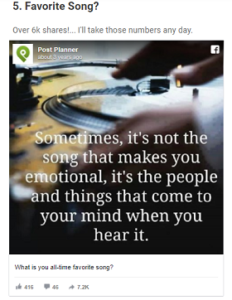
And before you delve into that fun, it’s wise to get into a strategic frame of mind. Because millions of people are doing social media aimlessly, without a purposeful end goal and you don’t want to slide into that trap.
When social media isn’t done strategically, it may not be very fruitful. It could waste your time and energy, and create a costly burden and wear you out, which is why strategy is a good investment of time and staffing resources.
I have to say it again, the foundation for good social media is to clearly understand your business goals, your personalized unique value proposition, your relevant brand image, who your specific target audience is, and what their most important immediate pain points are. If you’re not certain of that, your social media activity will be confusing and ineffective and you’ll give up.
Strategy creates focus, clarity, and gets more done so you don’t end up wasting others time or your own.
Keep it Fun and Personal
Social media wasn’t designed for business, marketing or profit. Connecting people and sharing is what it’s all about, something which brings out very positive things.
A certain imagination, patience, finesse, and interpersonal skill are required to flourish with it. Has anyone mastered it? I doubt it, however some have built enough connections and traffic that they’re capitalizing on it.
They found a niche and they simply do what comes natural. Few understand their context or how their posts power up more engagement. But then, that’s changing now.
If you visit some lifestyle bloggers on Facebook, you’ll see how they work their social magic and how they get people to return every day. They do it on a very direct and practical level and this kind of constant contact is powerful.
What Will Social Media’s Role be in Your Marketing Mix?
Some companies do social media by itself with little reference to other channels.
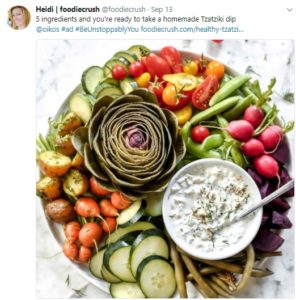
That uncomplicates it a little.
However social channels can help with your Google rankings. Links, shares, likes, and mentions are social signals Googlebot can find.
And it can be central to your customer engagement and sales strategy too. For many businesses, Facebook is the preferred engagement channel. Rather than viewing social media strategy as something separate by itself, see it as serving a role within a multichannel process that builds trust and loyalty with customers.
We all want likes and the essence of likes is trust.
If you’ve read this post on engagement strategy, you’ve learned a few ways to channel your content so the visitor is inclined to continue the conversation with you or your company.
The problem with website or social media engagement, is in how each visitor has their own pursuits, problems, perspective, budget and interests.
Some may not like what you’ve posted for other people so the matter of posting can be complicated. And if you’ve used Facebook you know abut the distractions, short attention span, and topics that bounce all over the place. So that reminds us of why social media needs strategy, goals and measurement.
New AI marketing software is giving us hope that we can customize our content for each visitor, something we can’t do ourselves.
What we can do right now is create accounts, post content, build friends and connections, start conversations, and get feedback. Because social media strategy is an iterative process where you adjust as you learn, having a guiding strategy helps to keep you on track to achieve tangible results and improve.
Before you can do great things, you need a general goal of getting involved and growing connections with the right people. Then you can establish more specific goals (which you’ll see below), learn more, and begin deepening the conversations you have. It’ll take time before you discover which topics/content you can present that get people interacting with you.
What works for others may not work for you and for that reason you may not want to copy their tactics and topics. Be prepared to learn and improve, over and over again. Your analytics will tell you if you’re on the right track.
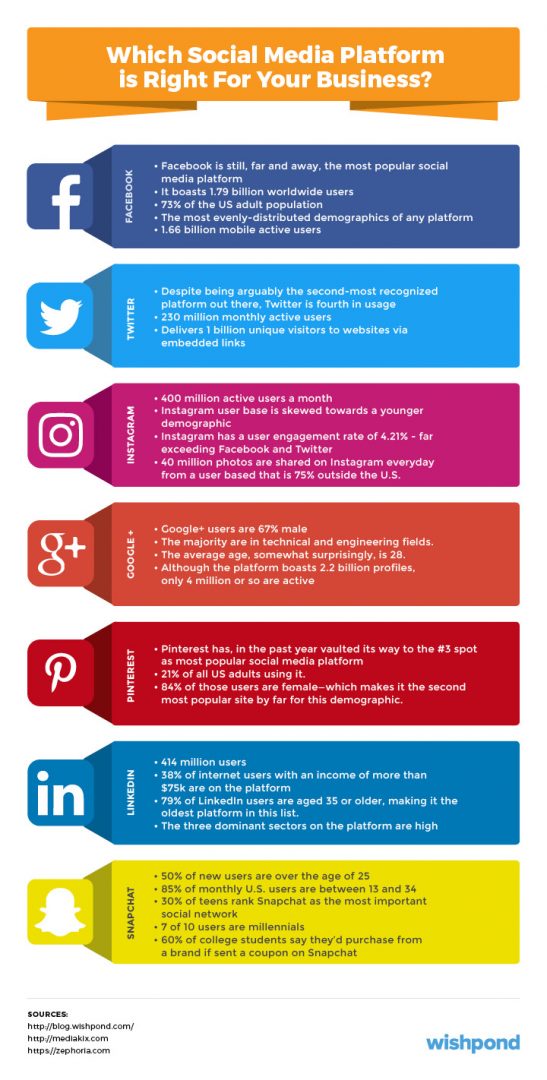
Social Media Workflow
This infographic reveals what you’ll be doing on a daily basis from content creation to curation to engaging in conversations to strategy planning to asessing analytics. Lots to do!

So, with that in mind, one of the key ways to set the stage for high social media engagement is to develop social pages with specific content channels. Then we populate those channels with relevant content based on how we think users are engaging with the content.
For instance, if we are a lifestyle blogger who uses food, travel, kids, health, home, and enterainment channels, what content experience do we want for each of them? We can tag the content so it appears in the channel we choose.
However, is your Facebook page good enough as it is? Does it look good? Is it displaying content so it’s appealing and does it really promote your brand well? If not, your social engagement channel’s purpose might be to shift visitor’s over to your blog or website.
Your social media strategy then may rather be a gathering place to then transfer them to your website.
If this is to be your strategy, your FB and Instagram pages need to be engaging and interesting enough to get others to Friend you, Like your posts and generate conversations. You may want to set up this same conversation platform on your website.
For those FB users who would rather do Facebook only conversations, that’s fine. Even if they make the trek to your website once, you’ve made a good branding impression. When they come around to get serious about business, the path to fulfillment will be paved.
And if they’d rather do business right on Facebook, then your strategy should let them do that too.
Hootsuite Social Media Strategy
Hootsuite is a Vancouver based software service that allows you to manage your complete social media campaign activity from one interface. You may decide to use them to grow your connections. And you may find that it’s better to work right within Facebook’s interface to do your posting.
Hootsuite’s Social Media Strategy Tips
Hootsuite advises us to set up Smart Goals for your social media strategy:
They should be:
- specific
- measurable
- attainable
- relevant
- time bound
A free pdf or ebook or an event on a specific date are excellent vehicles for measuring results. Set a stretch goal of 100 recipients/attendees and power up your activity to achieve it.
Social Media Goals
This part is very complex so you’ll want to pursue simple goals and objectives initially. Think about awareness, specific branding messages seen, responses, visits, repeat visits, content shares, and sales.
Awareness >> Engagement >> Sales
Some say the main goal of social media content distribution and conversations is to create a trusted relationship. I like that one, because people only interact and buy when they feel good and trust the person/company they’re interacting with.
Create a list of why people wouldn’t trust you and interact with you. Those are your objections.
What are some specific goals to shoot for? How about starting with the numbers of new connections, posts per day, visibility of posts, interaction levels, shares, comments, and referals to your website, etc.
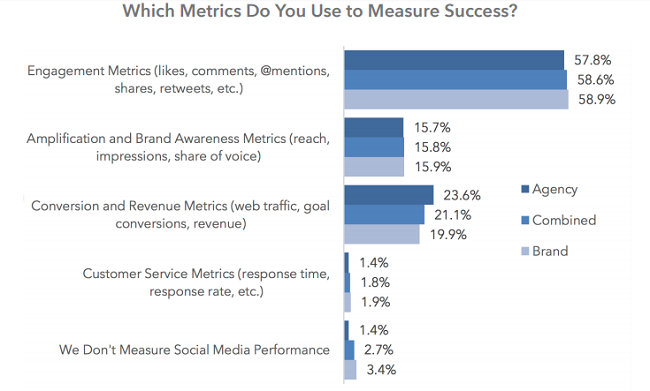
Try 3 Main Social Media Goals
1. post on selected topics or popular topics to let your connections react, then you can do social listening to learn more about how prospects feel about a topic and where their pain points are
2. research and create an incentive that will help drive engagement such as a contest, giveaway, or free download
3. create sharable content, distribute it, and gauge its success in being mentioned or shared
This way we’ve got the right topics, and encouraging our connections to participate and share. Sharing is very important.
On Social Media, it’s About Emotion
The material you post on your blog and product pages isn’t wanted on social media. You’ll find most people look pretty shallow on Facebook, Instagram and Twitter with the kinds of things they talk about and share, including their selfies. This could discourage you.
Hang in there though, because you can play that game, be purposeful, and still get them into your brand. If people are posting about Halloween, kids first day at school, pop stars, lunch recipes, vacations, Xmas decorations, viral videos, etc, it’s best to chime in with nice comments and further material on the topic they’ve chosen. Be careful about reacting to tasteless, political, or offensive, negative material.
What you respond to in social media is who you are. That’s not good branding. Consider deleting connections with weird, negative, shallow, or tactless people. The downside with them is too high.
Active posting and responding though creates a bond and lets them see how you empathize with their daily lives. Building a bridge between there and your products might seem like a very long one at first. But through daily interaction, the path will eventually show up.
Pushing commercial products and services right away without creating a connection isn’t wise. If you’re going to follow through with social media as part of your marketin mix, ensure you have the time and expertise to do it. It is very time consuming even with software tools. It all comes down to conversations and how immediate they are.
Social Media Posting Tips
- take interesting, creative photos – visuals are important
- share a few funny viral types pics and videos – short funy videos are popular shares
- focus on women – more women use Facebook and they have different sentiments than guys and they like to share
- use tasteful humor such as jokes and funny cartoons
- add the sumo social media sharing bar as you see on this page
- post key posts at specific times each day
- try a different topic or theme for all your social media for each day
- test your post headlines
- tag your posts using specific meaningful category words so you can which topics perform best
- use a subtle call to action when necessary to give your audience purpose and direction
- use tweets, blog posts, linkedin posts, G+ and pinterest post so you can get them to visit those pages
- track you competitors, see what their followers are sharing and linking
- offer discounts on purchase and run an expensive contest which you can talk about later
- find a popular person, a social media influencer you like and retweet their posts and start a conversation with them
- use your SEO keywords in your posts, because it tempers the meaning of all the things that get shared and what will give your website a ranking boost
- revise your blog posts with new important info then repost on social media
- don’t be so conservative and timid that everyone ignores you
- target specific people or personas in your social posts – use hashtags and headings that let them know it’s just for them, since creating special material for people makes them feel special
- avoid spamming by posting relevnt topics and using headings that indicate who the post is for
- feature your happy customer’s pics and posts
- retweet high quality posts or tweets realted to your industry
- hashtag influencers and mention them in your posts/tweets
- tweet/post the latest news – visitors want to know what you’re up to
Check out more tips at Talkwalker.com
Social Media Engagement Metrics
A strategy is difficult to execute without analytics. Your main metric is likely to be Facebook metrics. You can learn more about them here: Klipfolio. The problem with Facebook’s own metrics is that Facebook is really a content aggregator. Users curate most of the content in the FB post, and the user clicks on it and leaves FB to a website. That’s the way it should be.
But Facebook doesn’t know what you’re doing on that website. Google does because you’re using their browser. Social media needs tracking code that will let you know what Facebook users viewed and whether they enjoyed it.
The large enterprise marketer will want to look at enterprise analytics solutions such as those reviewed at G2Crowd. For SMBs, a less expensive option is using Hootsuite’s analytics capabilities. I’m not an expert on this topic so you’ll need to speak with an analytics expert or have your developer set the coding up for you. And you may have to manually add code to your links unless you use Hootsuite, Sproutsocial, or software while integrating your Google analytics code.
If you have a successful business, you may want to investigate better analytics solutions that Google Analytics.
Which Engagement Metrics are You Tracking?
Please read the post on Website engagement strategy for tips on what to track and measure. It’s important to track the content your visitor is viewing on your FB page and your website. The two work together to create a customer. Engagement is factor that indicates a future sale. Tracking over a 90 day period will help you identify the returning visitor who views one or two pages and then buys. In this last visit, they didn’t appear engaged, but in fact, they completed the presale process before.
Things to look for in social media engagement are the referring FB advertisement, post, Tweet, Pinterest pin, or instagram post they viewed, how long they stayed on your FB page and Website. Likes, shares, return visits, comments, that culminate in a website visit is a good metric. It’s the combination of certain factors that generally produce a customer.
Sequential behavior, on a topic, can mean they’ve discovered something and pursued it. There are a lot of window shoppers on social media so it’s that last step you’ll want to scrutinize – where they left or abandoned their shopping cart. Most times, their drive/interest wasn’t strong enough and you did all you could to warm them up.
You’ll need to check your sales funnel process and discover ways to strengthen their purchase intent. Sometimes it’s your content quality, or sometimes it’s just your copy and the keywords you used, and other times it might be a lack of incentives.
Where do you think your UVP/Brand is weak? Why do they think your product/service is not for them? Who do they socialize with on Facebook? What do they post about most. What do they share with others the most?
That will indicate their personal values and preferences. Read what they say and what their topics of conversation are and what words they use daily. Facebook’s artificial intelligence and analytics programs analyze all that information and use it to help you get your ads in front of the right prospects. That’s the advantage of Facebook Ads. Use them to improve your organic FB posts and Tweets.
Please do return to discover more strategy and tips to make your social media strategy and content strategy. Combine your strategy with Kaizen – the process of daily improvements and enjoy never ending growth.
Social media will assume more importance within your overall customer engagement strategy. It may be time to hire a digital marketing specialist to help you prepare for AI marketing and other trends.
Please do return to discover more strategy and tips to make your social media strategy and content strategy. Combine your strategy with Kaizen – the process of daily improvements and enjoy never ending growth.
Social Media Resources, Templates, Guides
Social Media Today – https://www.socialmediatoday.com/
Gord Collins – https://gordcollins.com/social-media/social-media-engagement-strategy/
Social Media Examiner – https://www.socialmediaexaminer.com/essential-elements-social-media-marketing-strategy/
Convince and Convert – https://www.convinceandconvert.com/social-media-strategy/social-media-strategy-in-8-steps/
Sprout Social – https://sproutsocial.com/insights/social-media-marketing-strategy/
Wishpond – https://blog.wishpond.com/post/115675437098/social-media-marketing-plan

